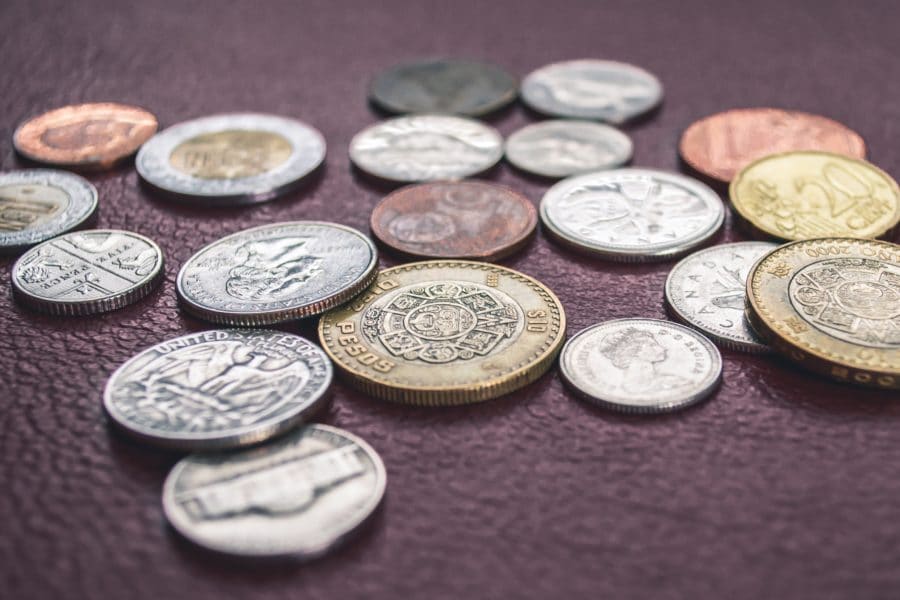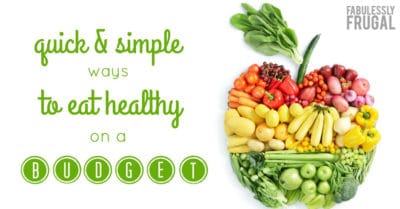How to Make a Budget With 7 Bank Accounts
Over the past several years, I’ve discovered a few different ways to help us stay on track with spending. One way is using the YNAB app. Check out my You Need a Budget review for all the details of why that works for budgeting.
Another trick that really helps me stick to my budget is to use multiple bank accounts for budgeting. In fact, we have 7 bank accounts that we use!
How to Use Multiple Bank Accounts for Budgeting
While the cash envelope system has been around for many years, I have to ask the question, who still uses cash? Driving all the way to the bank and pulling out money from the ATM, or having to ask the teller how much of each bill to hand me requires time and effort I’d rather put elsewhere.
The method that works better for me is using 7 bank accounts. Using multiple bank accounts for budgeting means that my money is distributed electronically each month, and it makes it easier to…
- Stick to my budget
- Save up for different purchases
- Create some spending boundaries, as well as some spending freedom!
Even cooler, you can easily use this system with the YNAB budgeting app!
The Free Checking Accounts We Use
My husband and I have our main account with a local brick and mortar nationwide bank. For all of our other accounts, we use Captial One 360. Here’s why we love it:
- There are ZERO monthly fees
- No overdraft fees (you are just charged interest each month if you are overdrawn)
- You can deposit checks through the mobile app for free
- Transferring money is a breeze
My kids all have their own checking and/or savings account here as well. When my littles want to put some cash into their savings account, they give me the cash and then I transfer from our main checking account to their savings account. SO EASY!
Capital One 360 Sign Up Bonus:
Just so you know… if you sign up for a Capital One 360 account with my referral link, you can get a $25 cash bonus as long as your initial deposit is $250! Yay for free money!
Go here to read all the offer details. Since I’m a Capital One 360 customer referring you, they’ll give me a bonus too (which means you can refer your friends and earn a bonus too!).
The 7 Bank Accounts You Need + An Optional One
Account #1: Bills and Fixed Living Expenses
The first account is for living expenses and bills. This includes things like…
- Mortgage
- Cell phone
- Electric
- Car insurance; etc.
Paychecks are deposited into this bank account, so it’s a lot easier to budget. You just need to make sure you leave enough in this account to cover all those fixed monthly bills. Then you’ll divide up the rest of the money into these other accounts.
Like I mentioned above, this bank account is a brick and mortar bank in your town that you can go deposit cash into if you ever needed to. It is linked to all of the other electronic banking accounts.
Account #2: Groceries, Dining, Clothing, and Misc Expenses
We use one card to pay for all the groceries, eating out, clothing, and miscellaneous purchases that come up. My hubby and I both have this card because there are plenty of times he’ll run to the store on his way home and pick up a thing or two that I need for dinner prep.
We also use this for family eating out (which is usually just a pizza night on a Friday night when he and I are on a date or a crazy night where dinner just doesn’t get on the table!). This does NOT include our date night funds or our personal clothing purchases. This is for family spending only. More on our personal spending below…
Account #3: Emergency Fund
An emergency fund is exactly what it sounds like. This account is there for a day when we need money in an emergency (I like to have enough in here to meet an insurance deductible at least).
Keeping this money in a bank account instead of cash means that we can easily transfer it over if we need to. This is separate from your savings account! It is to be used for REAL emergencies only!
Tip: Make this account a little harder to access… if you can easily transfer money out of it, you may be tempted to use it for non-emergencies!
Account #4: General Savings
Having a separate account for expenses you are saving up for or just general savings is always a good idea. You never know when you are going to need extra money, or when you might need to have extra money on hand.
You can keep all of your savings in one account, or split them up if you are saving for a bunch of different savings goals. Want to save for a new car? Dave Ramsey teaches that you should set aside cash every month (like you’re making a car payment) and earn interest on it, rather than pay interest! Once you have the cash saved, buy a car!
We’d also dip into this account if for some reason a paycheck was lower than what we were planning on and we needed more cash to cover monthly expenses.
Account # 5: Sinking Funds (or Household Savings)
If you aren’t familiar with the term sinking fund, it is a concept that allows you to put a little bit of money away at a time so that you don’t have to pay for a large expense upfront. Think of an annual bill (HOA fee’s, life insurance premiums…), or something that isn’t paid monthly. You could also add money into this account for Christmas spending too (or create a separate savings account just for Christmas).
You’d also use this account to pay for things like large appliances you’ll eventually need to replace (furnace, washing machine, dishwasher, lawn mower…).
Account #6: HIS Money
Every month we have an automatic transfer set up from our main checking account to my hubby’s checking account. This is his spending money that he can do whatever he wants with, no questions asked.
However, if he needs clothing or shoes or a haircut, he pays for those things with this account. He also pays for his own fuel from this account. AND he pays for date night on the nights it’s his turn to plan the date.
Account #7: HER Money
Just like my hubs gets his own “no questions asked” bank account, I get mine too! This is an off-budget account where I can buy anything I want for myself. I pay for my own gym membership from this account.
If I want to get a salad from Panera in the middle of the day, I pay for it from this account. If I want to get a pedicure, or when I get my hair colored, I pay for it from this account. I too pay for the date night (on the nights I’m in charge) from this account.
Account #8 (Optional): Vacations
We all want to travel more, but saving up for large expenses such as a trip can seem daunting! You could bundle this in the general savings account, but once you have the money saved up, how do you know when you’ve hit zero?
This is the beauty of having a whole separate account for vacation expenses! You can easily move the money when you need it, and you’ll know exactly how much you’ve saved at a quick glance.
P.S. If you use the YNAB app, you can set a goal for your vacation budget and it will quickly calculate how much you need to set aside each month to reach your goal!
How to Stick To The Budget and Make 7 Bank Accounts Work For You
This will work if you have a steady income that is about the same amount each month. Take some time and calculate how much needs to be transferred to each account each month, then set up automatic transfers!
Most banks let you set up spending alerts too. For example, with Capital One 360, I can set it up to be notified any time my bank account goes below a certain number. Or maybe your bank will email you your balance once per week. OR take time every week to reconcile your accounts and know where your money is.
In this day and age of electronic banking, it’s not difficult to manage money electronically. It’s incredibly easy! You just need to take some time to get things set up, build the workflow, and then spend within your limits!
What Tips Do You Have to Stick To Your Budget? How Do You Budget?
Trending Posts
Comments
Leave a Reply
Report a Problem
Please select the problem you are facing with this deal:
- Price Increased
- Price Decreased
- No longer available
- Expired
- Link doesn't work
- Suggestion
- Compliment
- Other
Add more details:
Thank you for your feedback. We really appreciate it.
Enter your email address if you would like to receive a follow up.
Please Try Again























This is a great article but there are two #3s and actually 8 bank account functions? A little confused